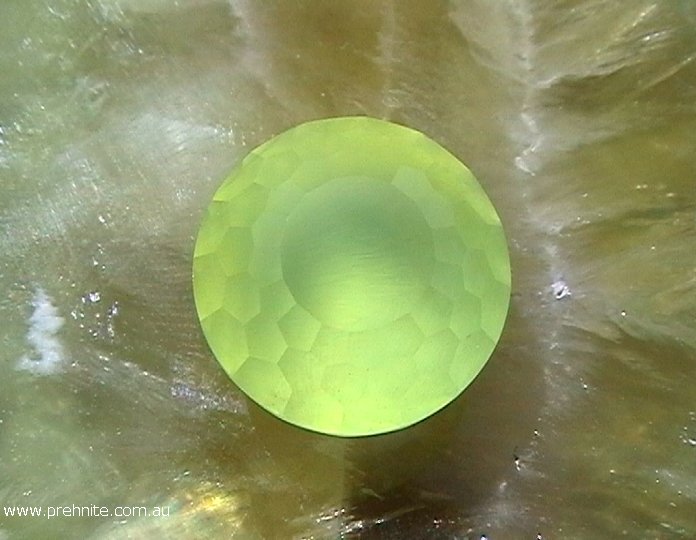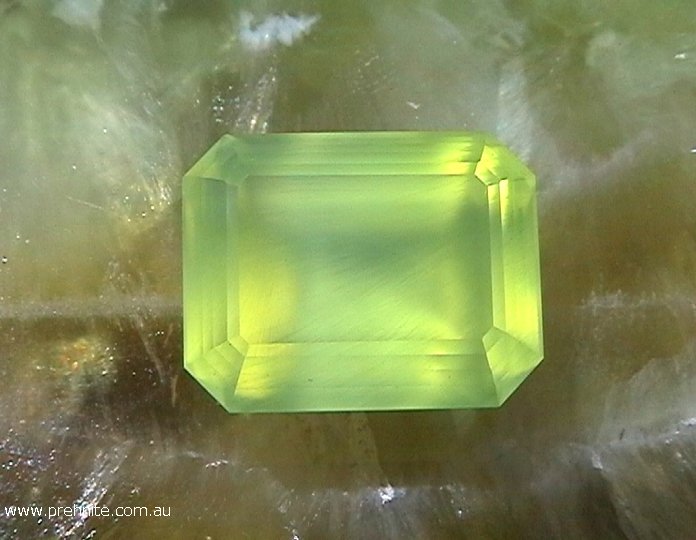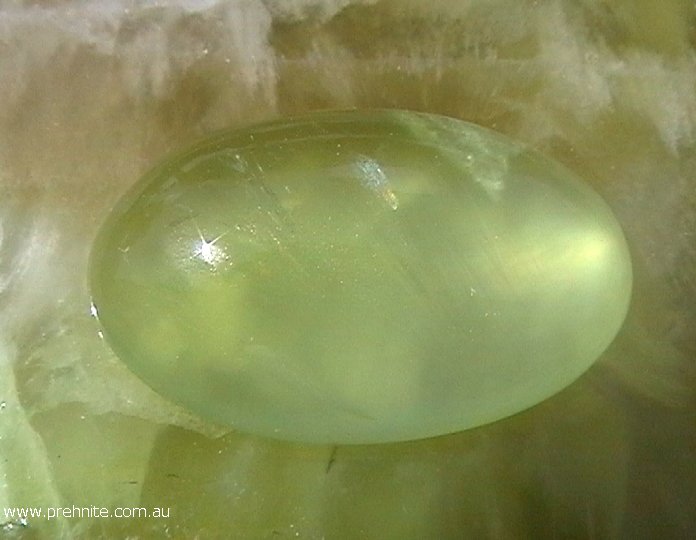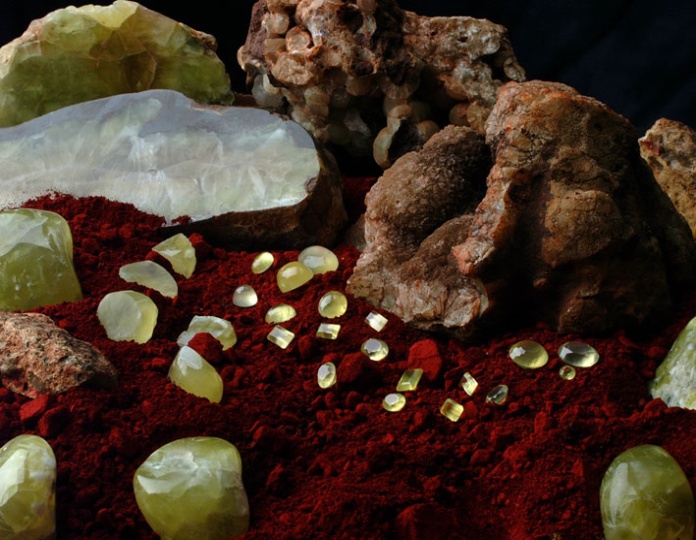Prehnite Information
Prehnite - Ca2 Al2 Si3 O10(OH)2
Prehnite is a rare gemstone that forms as a result of hydrothermal action in mafic volcanics
and was named after the Dutch Colonel Hendrik Von Prehn who discovered the stone in the 18th century.
In China it is known as Grape Jade (Putao Yu) because the nodule formations often have the appearance of a bunch
of green grapes.
Prehnite is a hydrated calcium aluminium silicate with a hardness of 6.0-6.5 and specific gravity of 2.85-2.95.
It has an orthorhombic crystal system and usually forms as radiating botryoidal masses. The material is translucent
to transparent and refractive indices are 1.61-1.64. The main colours are pale green to dark green, with yellow,
white and clear forms occurring in some locations. The main occurences are located in Africa (Namibia, South Africa),
Europe (Germany, Scotland, France), USA (New Jersey, Pennsylvania, Virginia), Australia (Western Australia, Northern Territory).
The Australian deposits occur in scattered outcrops of Antrim Plateau Volcanics of early Cambrian age (ca. 570 million years). The volcanics consist of massive, vesicular and amygdaloidal basalt with individual flows up to 60m thick. They are mainly of sub-aerial origin but show some shallow water features locally. Vesicles and geodes contain quartz(clear, smoky, amethyst), prehnite, calcite, zeolites and copper minerals. The volcanics are of extensive distribution in the East Kimberley and adjoining Northern Territory, covering thousands of square kilometers.
Main uses of prehnite include:
- Tumbling, all grades can be tumbled to produce attractive stones.
- Cabochons, pendants etc, medium to high grade material can be cut into various shapes for jewellery.
- Facetted stones, high grade material can be cut for jewellery.
- Specimens: samples have attractive features such as botryoidal structure, radiating rosettes and colour variations.
- Carving: all grades can be carved for decorative pieces.
Below are some photographs of cut stones. These images have not been enhanced in any way, they were taken in direct sunlight with a consumer grade Panasonic NV-MX3 MiniDV camera set on auto focus and aperture.

Facetted Prehnite, round cut, 1.7 cm diameter x 1.3 cm high, 3.2 grams.

Facetted Prehnite, emerald cut, 1.85 cm x 1.42 cm, 4.6 grams.

Prehnite cabachon, 2.6 cm x 1.54 cm, 5.1 grams.

See our specimens page for more examples of this beautiful gemstone.